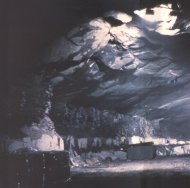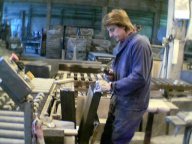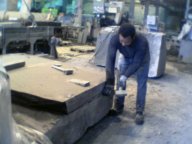ITALIAN SLATE
Historical-Geological Introduction
Slate is an allothigenous clastic rock and is the result of sedimentation of a very fine mud dating back to the destruction of early relief. This sedimentation took place very slowly over succeeding ages. Its transformation into schistose rock is due to the process of cementation of various water and mud components and to the process of flattering caused by tremendous pressure brought to bear millions of years on the sedimentation layer of formation above it.
 It
is characterised by the property of cleaving into smooth slim slabs in the
form of stratification and of a black-lead colour which tends to fade
under the influence of the elements.
It
is characterised by the property of cleaving into smooth slim slabs in the
form of stratification and of a black-lead colour which tends to fade
under the influence of the elements.
Today the quarrying and manufacturing industry of slate is a very important sector in the economy of the whole Liguria. This can also be attributed to the continual process of technological improvement and to the disposal of highly qualified skilled workers who are irreplaceable in the manual processing which characterizes the natural cleft finish.
There are other different types of surface finishes: diamond sawn, honed, natural cleft, bush hammered and sandblasted .
 |
 |
 |